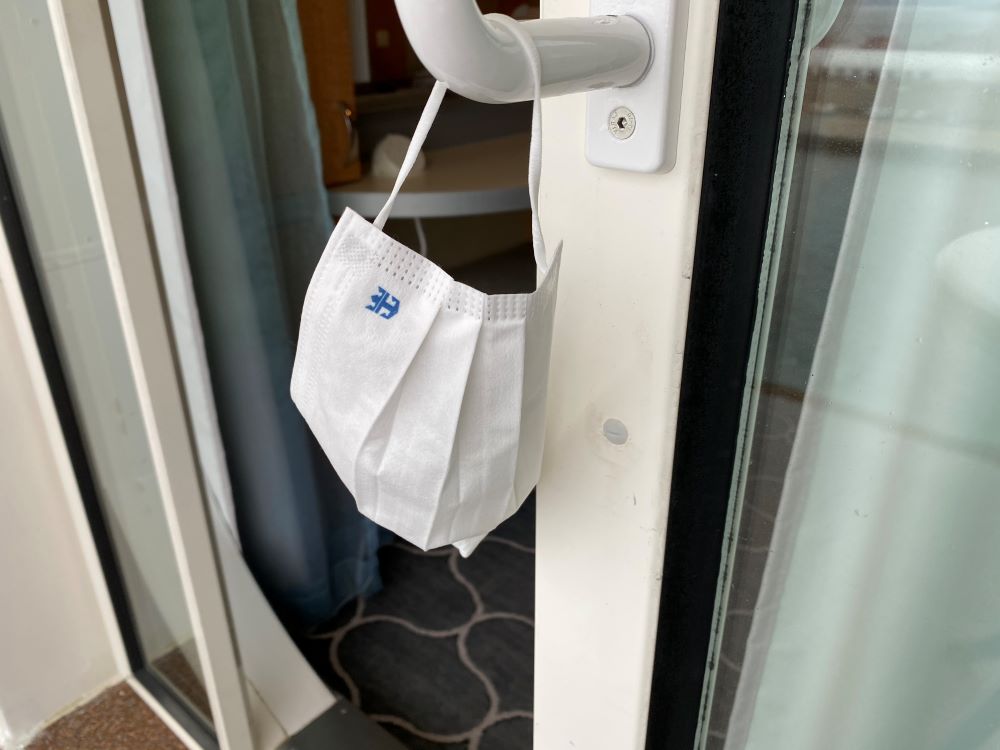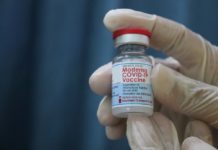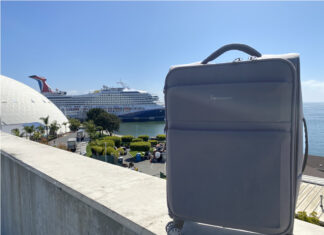Let’s be honest, at this point most of us are simply tired of talking, thinking, and hearing about the pandemic. For more than two years it’s been with us, and thankfully at this point cases are much lower than they were just a couple of months ago.
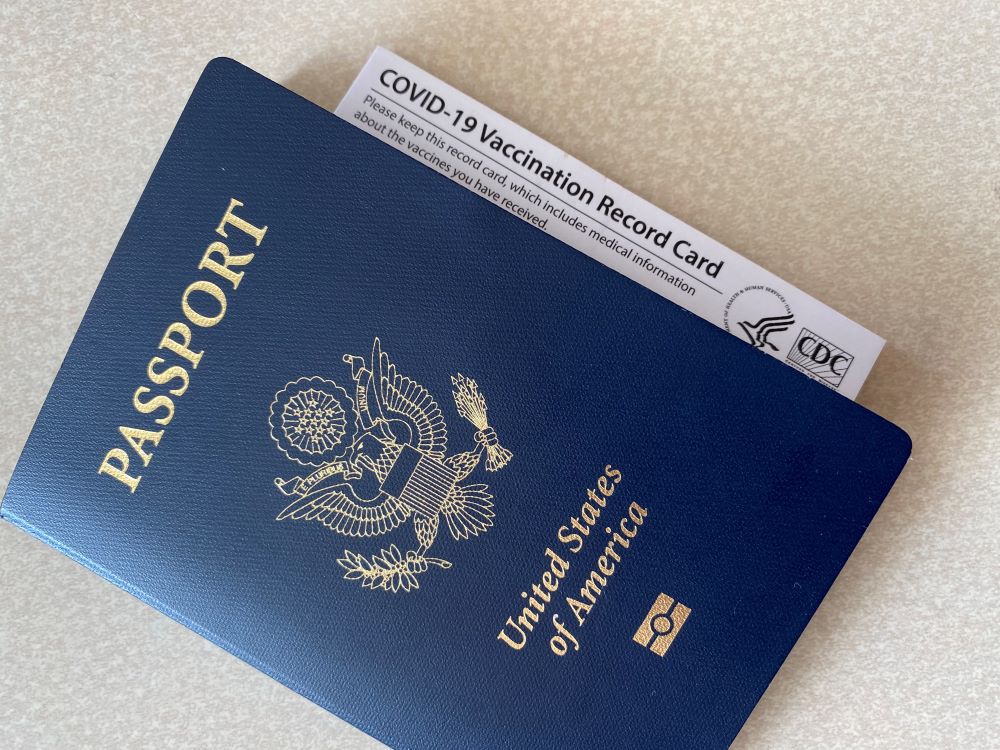
The vast majority of us have returned to our normal lives. That includes a big emphasis on travel, including cruising. In fact, Carnival Cruise Line recently announced it saw its biggest booking week in history at the end of March and beginning of April, by a considerable margin.
But when it comes to cruises and the pandemic, there are some important things that you still need to know that you may not realize. Below, we break down where things stand regarding health and cruises right now…
Ships Are Still Seeing Cases
During the start of the pandemic and again during the Omicron wave, news about cases on cruise ships made lots of headlines. Now, as people adjust to having the virus around, cases on a ship don’t get near as much press. Even so, you should know that cruises are still seeing cases, and sometimes in considerable numbers.
During the Omicron wave that saw cases on land reach their highest numbers in the United States, the number of “green” cruise ships according to the CDC (indicating no possible cases onboard) plummeted from more than 80 to just nine in a matter of weeks.
Then as Omicron subsided, green ships made a sharp comeback, going from nine in January to 58 by mid-March. Now, however, there’s once again been a steady rise in the number of affected ships.
In just over a month since that March peak in green ships, the number has fallen to just 18, indicating that despite not seeing a big rise in official case numbers on land, cruise ships are seeing more cases:
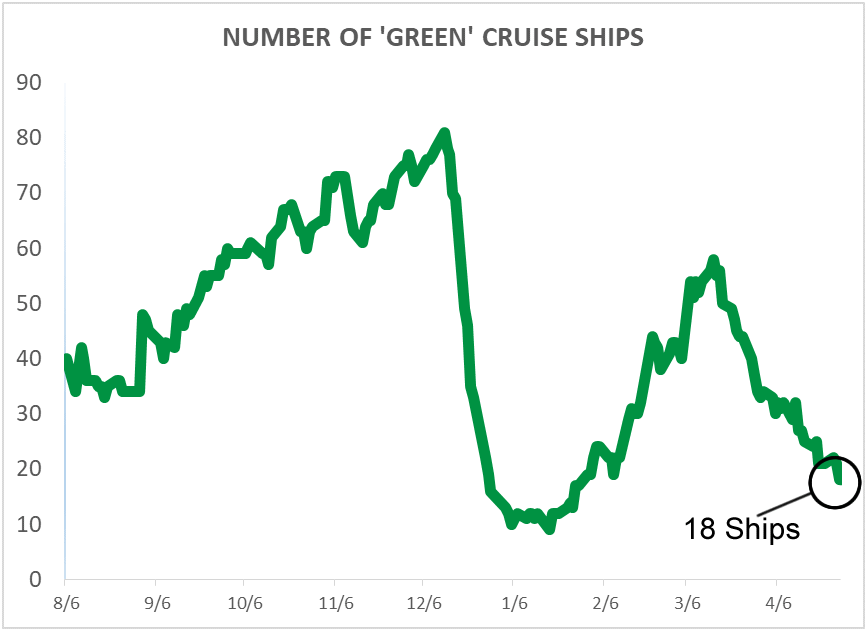
One thing to note is that the total numbers are impacted somewhat by some ships leaving the U.S. and therefore not being tracked by the CDC. Even so, the percentage of ‘non-green’ ships has also steadily risen.
Passengers Still Doesn’t Get Specific Case Numbers
What can be frustrating for passengers is that official case numbers aren’t released when it comes to cruise ships. They are reported to the CDC but the cruise lines, but then the CDC assigns a color status for the public — not the numbers.
These color status can be vague. For instance, a ‘yellow’ ship has cases in less than 0.3% of passengers and crew onboard. But an ‘orange’ ship has cases in more than 0.3% of those onboard. So if a ship has five thousand people aboard and is orange, it could have 15 people test positive… or 150. We just don’t get those numbers unless they are provided by another agency.
For instance, according to CBS News, the Ruby Princess docked in San Francisco in mid-April with 143 passengers testing positive. That figure was provided by San Francisco’s health department. All we know from the CDC data, however, was that the ship has an orange status.
Cases Seem Less Severe Than In Early Days
There is some good news that should put anyone concerned about cases at ease. By all accounts, they seem to be much less severe.
When discussing the outbreak aboard Ruby Princess, CBS News reported the following:
San Francisco’s health department said everyone aboard the Hawaii cruise was vaccinated and that the people who tested positive showed mild or no symptoms.
“Only one person was hospitalized, which speaks to the incredible efficacy of vaccination,” the department said in a statement.
- CBS News
And in February when Omicron was impacting ships, Michael Bayley, the head of Royal Caribbean International, said that among crew testing positive, nearly all were asymptomatic and just a small percentage had mild symptoms.
“The impact on the crew was effectively zero, except it did take them out of operation for the period of their quarantine,” Bayley said.
Cases Are More Likely to Be Found on Ships
While there is little argument that the virus can spread in close confines such as a cruise ship, there may be another reason that cases are found on ships. That’s due to the protocols in place to find and contain any cases.
For instance, crew members are tested regularly under the CDC’s program for cruise ships. Passengers require tests before boarding, and unvaccinated passengers require even more testing while sailing. If cases are found, contact tracing is performed among close contacts to root out other possible positives.
The same can’t be said for the vast majority of the travel industry. For instance, there is no testing requirement to board a domestic flight or to stay at a resort, or play in a casino on land.
Nor are vaccine requirements in place like for cruise ships. Most ships sail under the CDC’s definition of “highly vaccinated,” meaning that 95% of passengers and crew have the shot.
Onboard Restrictions Have Eased
For the public, how to think about the virus and cruise ships can be confusing. On one hand, the number of green ships has fallen and some larger outbreaks are being reported. On the other, there is more testing, vaccines are required, and the cases seem to largely be mild in nature.
We’d suggest taking a cue from the CDC and the cruise line’s restrictions. On that end, both parties — which have an interest in keeping passengers healthy — have eased their policies in recent weeks and months.
For instance, during the Omicron wave cruise lines largely required masks while in indoor areas of the ship. Those restrictions have now eased. So have restrictions on who can sail, with some cruise lines like Norwegian opening up their ships to younger passengers (under 12) without the vaccine.
And the CDC removed its travel warning for cruises entirely in late March. The agency recommends being up to date with your vaccination (meaning having a booster if eligible), but it’s not required.
Bottom Line on the Virus and Cruising
The bottom line seems to be that the public — and cruising — have reached a point where we have learned live alongside the virus but help to control its spread and severity. Cases continue to rise and fall on ships, but it seems to not be causing the massive disruptions or illness like we used to see.
Risk-averse passengers may want to be more cautious, but there’s no doubt that many people have decided the protocols in place — combined with less severity overall — mean a return to the sea.

